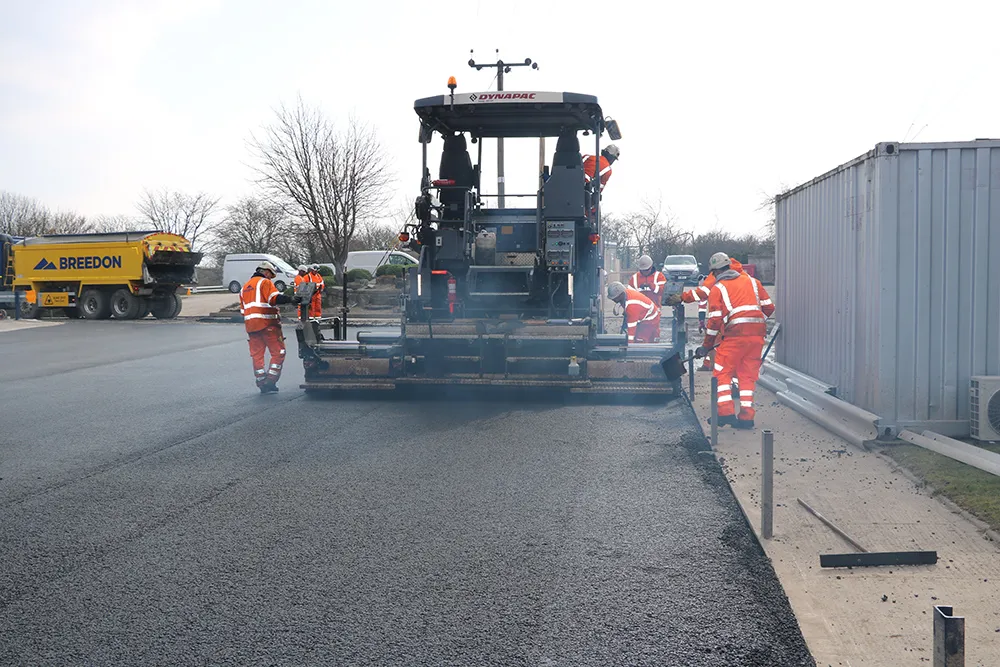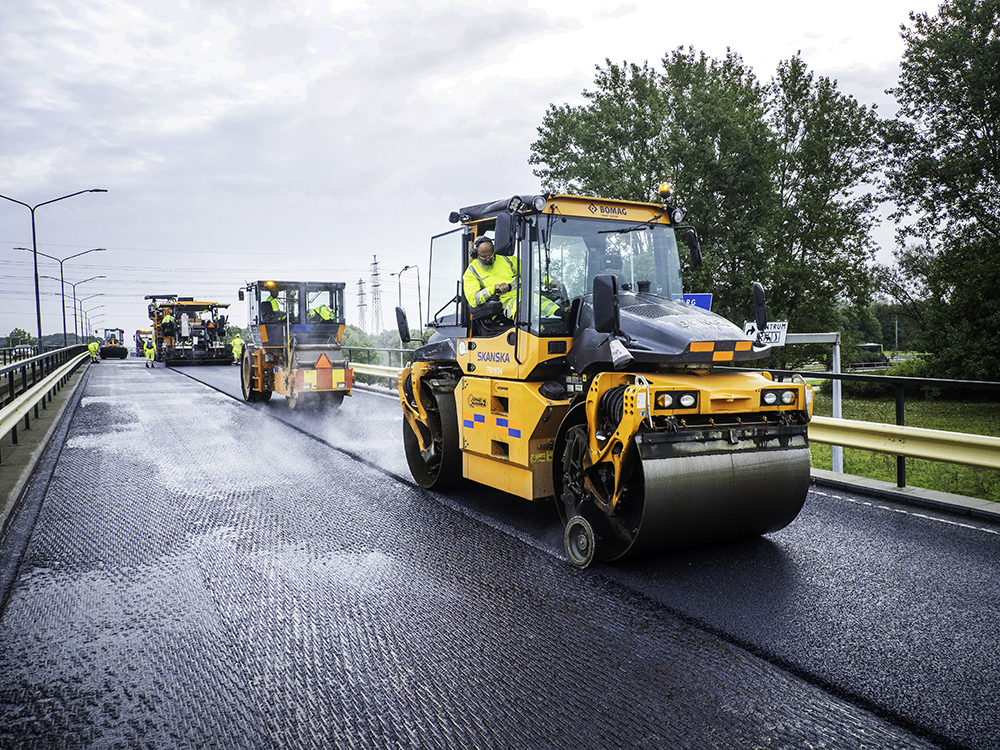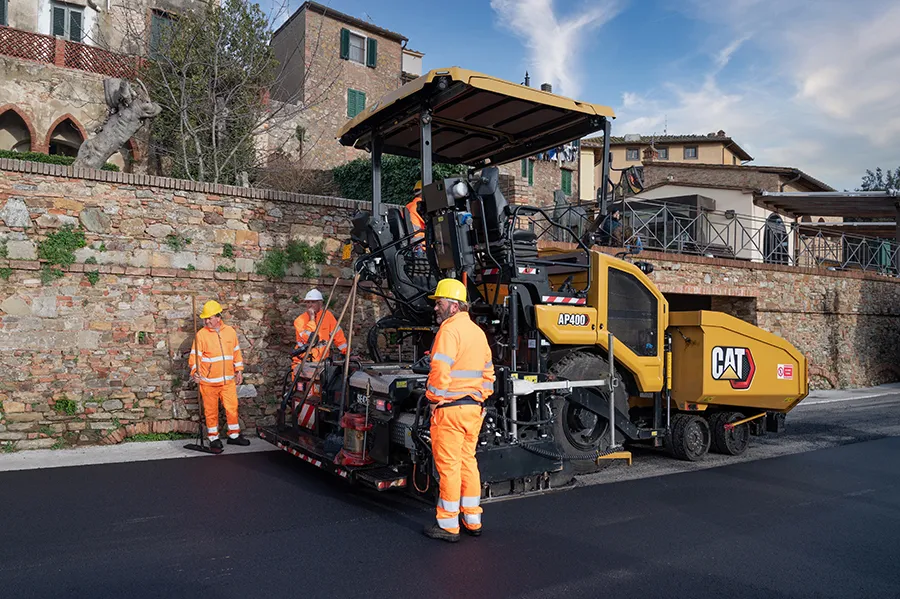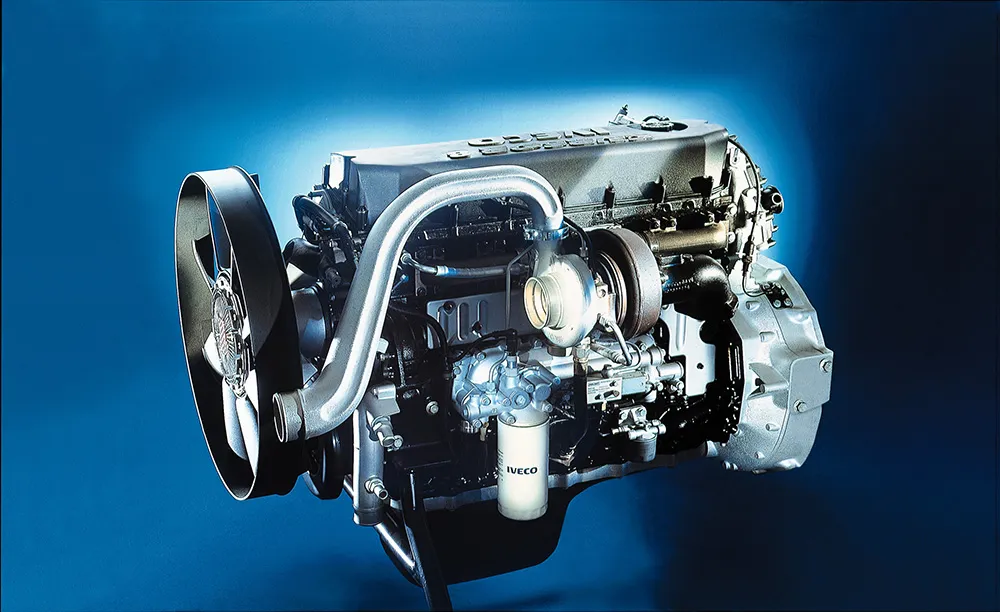
This year saw the launch of Nypol RE from Nynas, a polymer modified bitumen (PMB) containing biogenic material. But the specialist bitumen supplier’s interest in plant-derived materials, and their potential role in creating more sustainable pavements, dates back much further.
“We started with studies into biogenic materials in our own laboratories back in 2012 and went on to work with universities and other independent researchers, before moving onto field trials,” recalls Jenny-Ann Östlund, sustainable development & technology director for bitumen at Nynas.
“One of the most important issues for us was performance and circularity: how would the inclusion of biogenic material impact on the service life and on reuse.” Research at Ancona University in Italy showed both that the new binders aged more slowly than standard bitumen and that asphalt pavements containing these binders could be reused successfully.

The decision to use the biogenic material only with polymer modified bitumen (PMB) was also driven by sustainability principles. “We wanted to use the biogenic material to the best effect,” explains Östlund. “Road surfaces made with PMBs last longer than those made with standard bitumen, but a drawback of PMBs is that they have a relatively high carbon footprint. Our idea is to add enough biogenic material to bring the embodied carbon due to manufacture down to the same level as for a standard bitumen binder.”
Simply replacing a proportion of standard bitumen binder with a biogenic material would ‘save’ carbon in the short term; biogenic material has a negative carbon footprint since it has been made from plants that sequester carbon as they grow. However, in the long term it would be a false economy. If the road surface fails sooner than one made with PMB would have, that means that more materials, energy, disruption – and carbon - will be spent repairing and maintaining it.
Nynas also put Nypol RE through its paces on health and safety issues, with laboratory and field tests to look at fumes and other health issues. All the results were satisfactory.
“You must never compromise on durability, circularity or the health, safety and environmental impacts,” says Östlund. “If you compromise on one of these things, you end up with a sub-optimised solution.”
Six years’ track record
A first full-scale trial using a Nynas binder containing biogenic material was conducted in Sweden in 2016, with a second trial following on in 2018. From there a process to combine the biogenic material with a PMB was developed – which is more challenging than for a standard PMB, explains Östlund.
In Autumn 2021, Skanska paved an area of 35,000m2 in Malmö, Sweden, using Nypol RE 73 together with a reference section of conventional PMB. “We were unable to identify any differences between the two types,” says Kenneth Olsson, Skanska’s asphalt specialist, with the paving crew reporting good workability.
Earlier this year contractor Breedon installed Nypol RE for the first time in the UK on a car park in Nottinghamshire. “The properties of the asphalt and test results clearly demonstrate there is very little difference in performance between Nypol RE 103, the PMB with biogenic material, and Nypol 103,” reports Breedon technical director Tony Wilson.

Diligence in calculating the carbon footprint of a material is just as important as diligence in testing its properties and performance, according to Östlund. This view was underlined at COP27 last month [November] when United Nations Expert Group on net zero commitments published its first report, ‘Integrity Matters', calling for transparency, good governance and genuine attempts to reduce carbon emissions.
Nynas’ approach to calculating the carbon footprint of Nypol RE has been vetted by a third party, the IVL Swedish Environmental Institute, so that it can be used with confidence in life cycle analysis calculations. “We as an industry are already under scrutiny,” says Östlund. “That's why we really need to act with credibility.”
Nynas’ decision to use biogenic binders in PMB, rather than simply deploying it as a carbon-lowering device in any binder, is all about sustainability by having a whole-life approach, both in terms of cost and carbon footprint. Getting the technology to this point required more investment in R&D, but for Nynas, this was the right thing to do.
Content produced in association with Nynas









